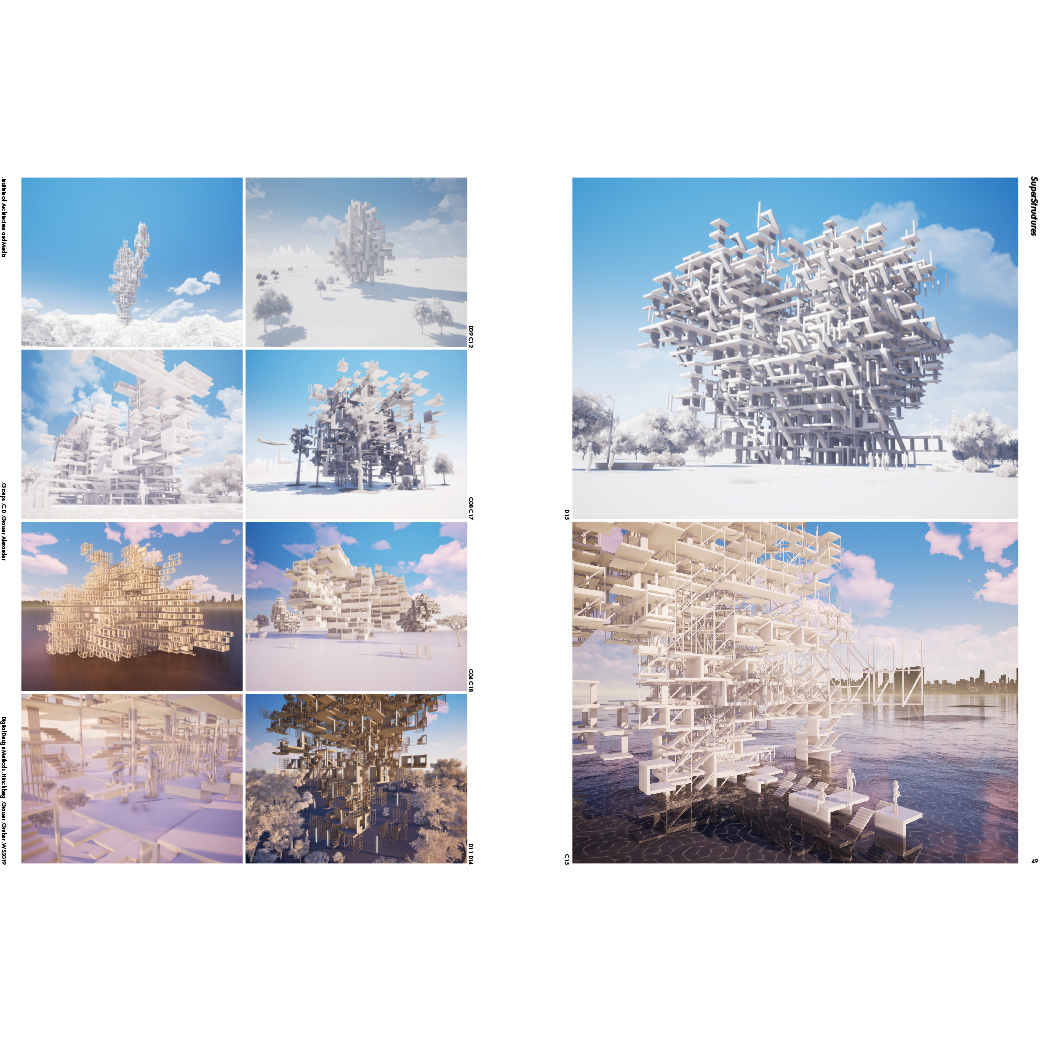SuperStructures
.digital.architecture.fuzzy.formationsStatus
Research / Academia / Teaching
‘Digital Design Methods - DM2’. Bachelor Seminar
Collaborative Objects Research
‘Digital Design Methods - DM2’. Bachelor Seminar
Collaborative Objects Research
Date
2019
Professor
Alexander Grasser
SuperStructures
Students:
Massl, Dizdarevic, Vidovic, Katic, Rungger, Sikanic, Schlömmer,
Lucic, Prackwieser, Tošić, Costović, Schipflinger, Rom, Graf, Ettinger, Eichhorn, Sulzer, Unterüberbacher, Zamuda, Begovic, Buzás, Schreilechner, Stepanek, Hirzberger, Monsberger, Perkovic, Josic, Burgsteiner, Radl, Bürgler, Brandauer, Tomescu, Cernko, Ivančić, Sari, Resch, Lendvai, Pirker, Lang .student tutor: Valentin Gritsch @ Institute of Architecture and Media, TU Graz
.Digital Architecture in the Age of Collaborative Objects
The disruptive power of the digital, is based on data and information and the interplay of its part to part and part to whole relationships. The choreographed collaboration of those components, information and data, on a massive scale, is what we can understand as computational thinking. A disruptive logic that, on a massive scale, enabled many collaborative platforms. Can we use that computational thinking in digital architecture to work excessively and collaboratively with information to get it In- Formation? Can we design collaborative objects that can be shared, used, modified and adapted? How can they store, evaluate, transmit and compute data as well as communicate with each other? How can we design those collaborative open systems? Digital architecture in the age of collaborative objects, explores the digital and tectonic potentials of scripting behaviors of messy and redundant datasets, to generate
a digital architecture of endless fuzzy formations.
Therefore, this booklet, represents a creative platform in itself, an aspirational and inspirational messy dataset of playful digital architecture.
Digital ? So YES!
The disruptive power of the digital, is based on data and information and the interplay of its part to part and part to whole relationships. The choreographed collaboration of those components, information and data, on a massive scale, is what we can understand as computational thinking. A disruptive logic that, on a massive scale, enabled many collaborative platforms. Can we use that computational thinking in digital architecture to work excessively and collaboratively with information to get it In- Formation? Can we design collaborative objects that can be shared, used, modified and adapted? How can they store, evaluate, transmit and compute data as well as communicate with each other? How can we design those collaborative open systems? Digital architecture in the age of collaborative objects, explores the digital and tectonic potentials of scripting behaviors of messy and redundant datasets, to generate
a digital architecture of endless fuzzy formations.
.Super Structures
This collection of works was designed by a group of 40 students, during the bachelor’s seminar course ‘Digital Design Methods - Super Structures’, under the supervision of Alexander Grasser and the support of Valentin Gritsch. A group of students, a generation of so called digital natives, was trained to become more fluent in digital architecture and computational thinking. From the fundamentals of computational thinking, by working with sets of data and scripting behaviors of collaborative objects, to playful aggregations of fuzzy formations as well as the implementation and colorization using millennial communication tools, emojis and tattoos, results in a digital architecture of messy multi- objective information in-formation.Therefore, this booklet, represents a creative platform in itself, an aspirational and inspirational messy dataset of playful digital architecture.
Digital ? So YES!









Content Copyright:
all rights reserved to
ALEXANDER GRASSER
all rights reserved to
ALEXANDER GRASSER